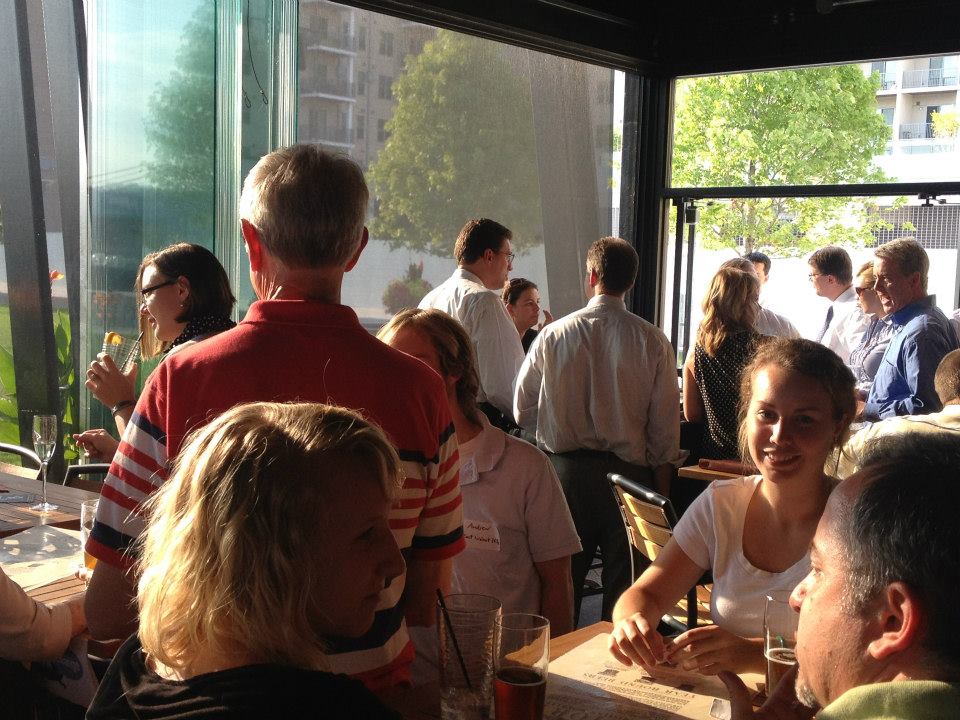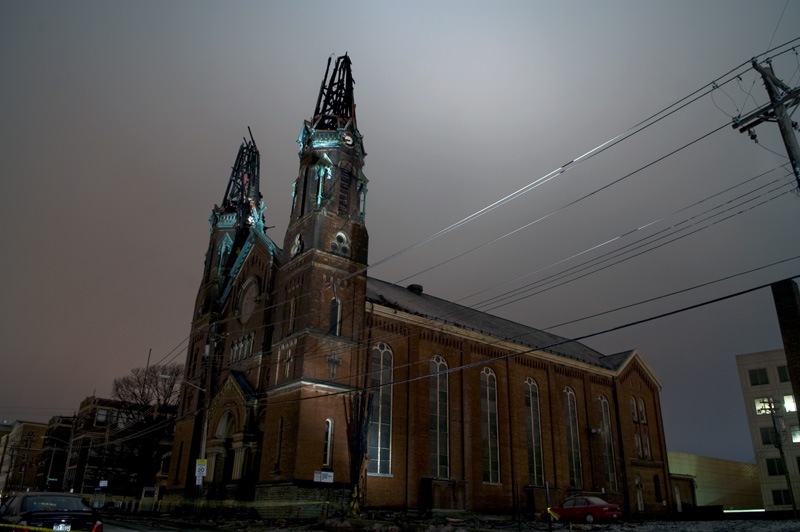After a nearly two-month break, the UrbanCincy team is proud to kick-off the 2013 season of URBANexchange events.
Following a successful pilot run last year, URBANexchange will return this Wednesday for a full year of events at the Moerlein Lager House.
“Dozens of people excited about cities and Cincinnati’s urban core showed up at last year’s events, and we’re really excited about the possibilities for a full year’s worth of URBANexchanges in 2013,” said Randy Simes, Owner & Managing Editor of UrbanCincy.
UrbanCincy will be giving away prizes at each of the events in 2013, with a custom tile of Carew Tower (image) from Rookwood Pottery being given away at February’s URBANexchange courtesy of Downtown Cincinnati Incorporated.
The collection of events in 2013 will take place on the first Wednesday of each month to avoid conflict with weekly bike rides that occur in warmer weather, and when there are no home Reds baseball games. The group will always meet in the northwest corner of the Moerlein Lager House’s biergarten – closest to the ‘Moer to Go’ window and outdoor bike racks.
“We are really excited to continue to offer a monthly event where fellow urbanists can get together, share ideas, and expand their social networks,” stated Simes. “The goal with our URBANexchange events is to not create a platform for one-way presentations, but rather create an opportunity for city supporters in the region to get together and meet one another.”
URBANexchange events are always free and open to the public, and take place from 5:30pm to 8:30pm at the Moerlein Lager House (map) within Cincinnati’s Smale Riverfront Park. Those interested in attending are welcome to come and go anytime during the event, and friends are always encouraged.



